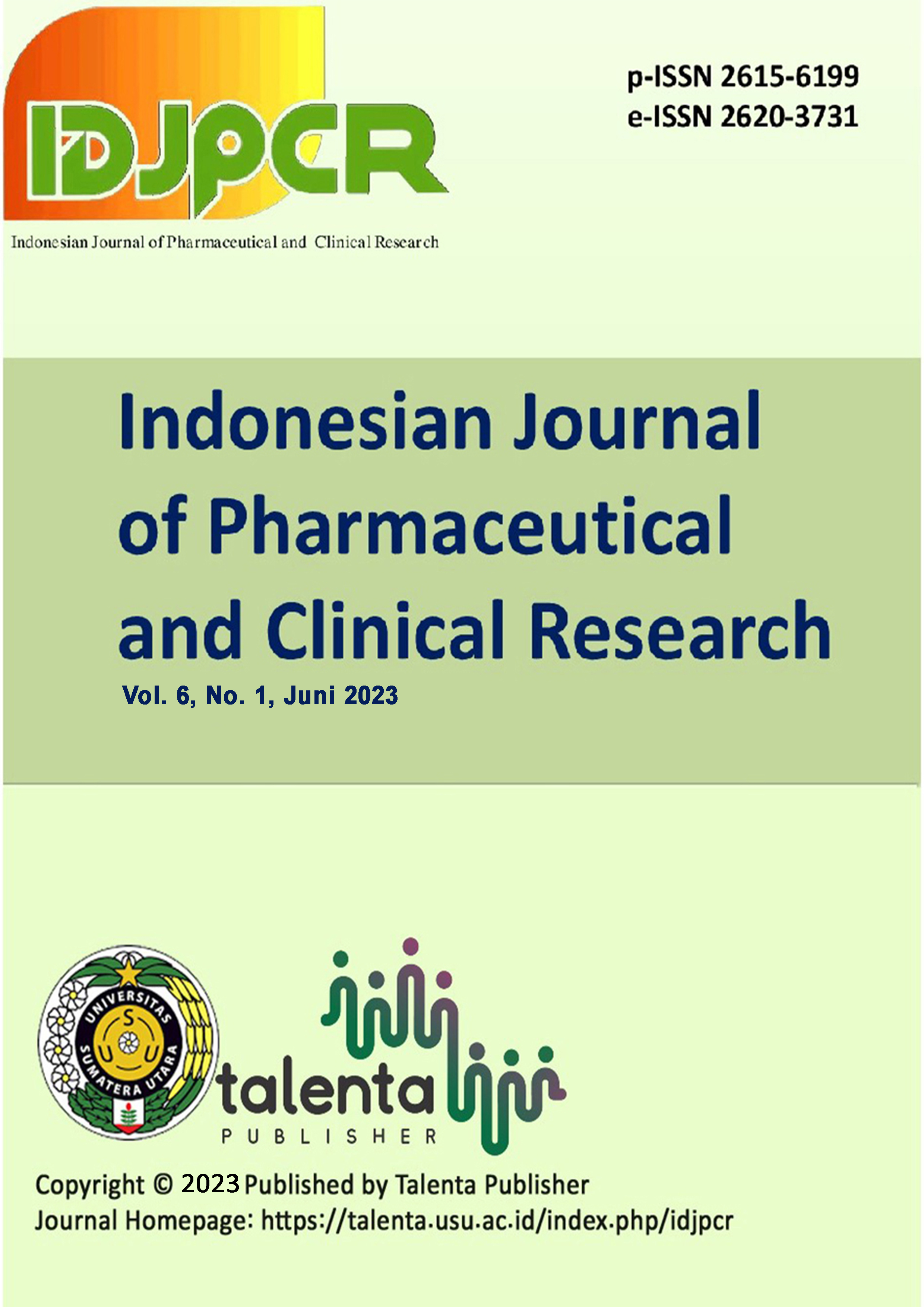Antioxidant activity of 1.3-bis(p-hydroxyphenyl)urea by CUPRAC and FRAP methods
DOI:
https://doi.org/10.32734/idjpcr.v6i1.17768Keywords:
Antioxidant, Free radicals, Inflammation, p-aminophenol, 1.3-bis(p-hydroxyphenyl)ureaAbstract
An imbalance in the number of free radicals produced in the body can result in oxidative stress. Excessive oxidative stress can lead to chronic inflammation, which in turn can lead to most chronic diseases. Inflammation is related to oxidation through increased reactive oxidative stress, which can target modulators associated with inflammation, such as inflammatory cytokines. Antioxidants can inhibit or stop oxidation by protecting the body and neutralizing free radicals. 1.3-bis(p-hydroxyphenyl)urea is a modification of p-aminophenol and has hepatotoxic side effects such as those caused by acetaminophen. This compound can relieve pain, is anti-inflammatory, and has fewer side effects. This research was conducted to evaluate the antioxidant activity of 1.3-bis(p-hydroxyphenyl)urea using the CUPRAC (Cupric Ion Reducing Antioxidant Capacity) method and the FRAP (Ferric Reducing Antioxidant Power) method. The results of the CUPRAC method research show that the 1.3-bis(p-hydroxyphenyl)urea compound has an IC50 value of 4.40 ± 0.07 μg/mL. Meanwhile, the FRAP method was 29.36 ± 1.20 μg/mL. Apart from suppressing inflammation, this compound has the potential to be an antioxidant compound.
Downloads
Downloads
Published
How to Cite
Issue
Section
License
Copyright (c) 2023 Indonesian Journal of Pharmaceutical and Clinical Research

This work is licensed under a Creative Commons Attribution-ShareAlike 4.0 International License.
The Authors submitting a manuscript do so on the understanding that if accepted for publication, copyright of the article shall be assigned to Indonesian Journal of Pharmaceutical and Clinical Research (IDJPCR) and Faculty of Pharmacy as well as TALENTA Publisher Universitas Sumatera Utara as publisher of the journal.
Copyright encompasses exclusive rights to reproduce and deliver the article in all form and media. The reproduction of any part of this journal, its storage in databases and its transmission by any form or media, will be allowed only with a written permission from Indonesian Journal of Pharmaceutical and Clinical Research (IDJPCR).
The Copyright Transfer Form can be downloaded here.
The copyright form should be signed originally and sent to the Editorial Office in the form of original mail or scanned document.









